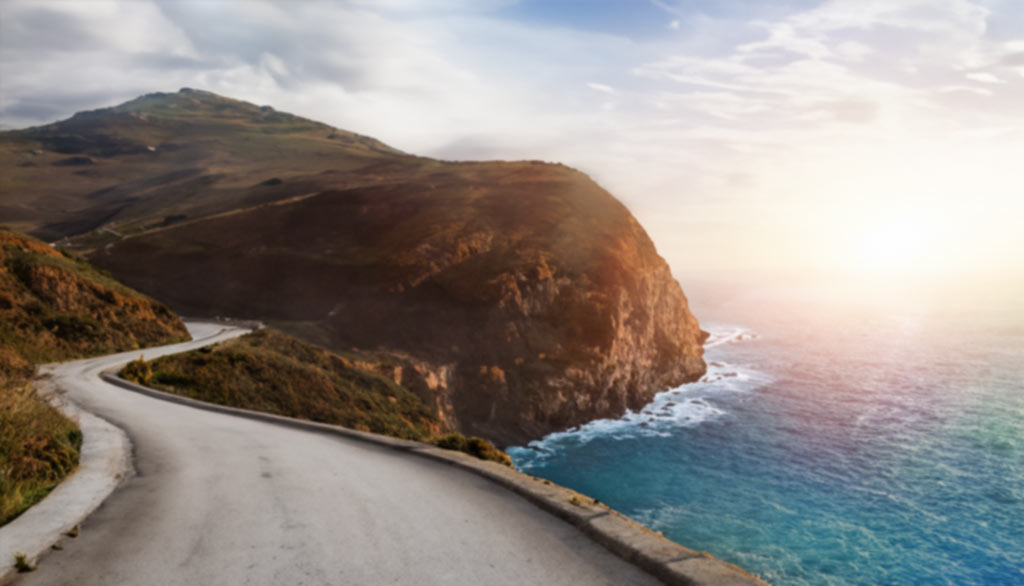Crete and Paros offer unique experiences when it comes to celebrating special occasions. Crete, with its rich history and cultural heritage, Crete provides an ideal setting for exploring ancient ruins like the Palace of Knossos and attending local festivals that showcase traditional music, dance, and cuisine. Paros is a romantic destination perfect for couples celebrating milestones like honeymoons or anniversaries, with its villages, secluded beaches, and active nightlife. Crete is the largest island in Greece, while Paros is significantly smaller.
A Crete vacation offers various activities for travellers. Visitors can explore the island’s archaeological sites, hike through gorges like the Samaria Gorge, and relax on beaches like Balos and Elafonissi. Crete is known for its delicious cuisine, with dishes like Dakos salad and Kalitsounia pastries showcasing the island’s fresh, local ingredients. Paros is a gem in the Cyclades islands. Travellers can wander through villages like Naoussa and Lefkes, admiring the traditional Cycladic architecture. The island features some of the most beautiful beaches in Greece, such as Kolymbithres and Santa Maria, perfect for swimming, snorkelling, and water sports. Hiking trails, like the Byzantine Trail, offer scenic routes through olive groves and coastal landscapes. Choosing between the two is a matter of personal preference and desired activities.
Does Crete have better beaches than Paros?
Crete and Paros both have excellent beaches, but their appeal depends on preferences. Crete offers more diverse and dramatic landscapes, with stunning beaches like Balos Lagoon, Elafonissi, and Falassarna, though many require long travel times. Paros features more accessible beaches with great facilities, such as Kolympithres and Golden Beach.
Crete is ideal for adventure seeking people, while Paros is better for convenience and relaxation.
What are the best beaches in Crete?
Listed below are the best beaches in Crete:
- Balos Beach: Balos Beach, at HHHQ+PC, Kissamos 734 00, Greece, lies on Crete’s northwestern tip. A turquoise lagoon with white and pink-hued sands forms the landscape. Shallow, clear waters allow swimming and snorkeling. A remote location and unspoiled nature make Balos Beach a highly photographed site. Visitors swim, snorkel, sunbathe, explore Venetian castle ruins, and hike trails with panoramic views of the beach and Gramvousa Peninsula. Balos Beach ranks among Crete’s best beaches. No admission fee applies, but parking and boat tours require payment.
- Elafonissi Beach: Elafonissi Beach, at Elafonisi, Inachori 730 01, Greece, lies on Crete’s southwestern coast. Pink-hued sands and clear turquoise waters define the landscape. A shallow sandbar connects the uninhabited island to the mainland, forming a lagoon-like setting. Visitors swim, snorkel, sunbathe, explore dunes, and walk along the sandbar. Boat tours and water sports are available. No admission fee applies, but parking and boat tours require payment.
- Vai Beach: Vai Beach, at Epar.Od. Monis Toplous – Vai, Toplou 723 00, Greece, lies on Crete’s eastern coast, 25 kilometers (15 miles) east of Sitia and 94 kilometers (58 miles) east of Agios Nikolaos. The largest natural palm tree forest in Europe, with over 5,000 trees, surrounds the sandy shore. Visitors swim, sunbathe, and explore the forest. Snack bars and coffee places provide amenities. No admission fee applies, but parking and services require payment.
- Falassarna Beach: Falassarna Beach, at 734 00, Greece, lies on Crete’s western coast, 58 kilometers (36 miles) west of Chania. A long stretch of golden sand and clear waters borders olive groves and vegetation. Organised sections offer umbrellas, sunbeds, and beach bars, while secluded areas provide privacy. Visitors swim, sunbathe, snorkel, and engage in windsurfing and kitesurfing. Nearby ruins of the ancient city of Falassarna add historical interest. No admission fee applies, but umbrellas, sunbeds, and water sports rentals require payment.
- Preveli Beach: Preveli Beach, at 740 60, Greece, lies in Crete’s Rethymno regional unit, 35 kilometers (21 miles) south of Rethymno. The Megalopotamos River meets the Libyan Sea, forming a lagoon with a palm-lined riverbank and a sandy shore. Visitors swim in the lagoon, sunbathe, explore the palm forest, and hike trails with panoramic views of the beach and cliffs. Boat tours provide additional access. No admission fee applies, but parking and boat tours require payment.
What are the best beaches in Paros?
Listed below are the best beaches in Paros:
- Kolymbithres Beach: Kolymbithres is a beach in 844 01, Greece, 4 kilometres (2.4 miles) west of Naoussa town on the northern coast of Paros. It features striking rock formations with naturally sculpted granite rocks, creating small bays and swimming coves. The clear waters and landscape make it one of the most photographed beaches in the Cyclades. The unusual rock formations, turquoise waters, and natural beauty set Kolymbithres apart from other beaches. Visitors can swim and snorkel in the coves, sunbathe on the rocks, photograph, and explore the unique landscape. It is a free public beach and an accessible beach destination.
- Santa Maria Beach: Santa Maria is a long, sandy beach on the northeastern coast of Paros, near the town of Naoussa. It has soft golden sand, shallow turquoise waters, and a well-developed beachfront with amenities. The beach is divided into two sections – the main Santa Maria Beach and the smaller Mikri (Little) Santa Maria Beach, both offering a relaxing atmosphere and beautiful views of the nearby island of Naxos. Santa Maria is one of the most popular and lively beaches in Paros. It is known for its lively beach clubs, water sports facilities, and beautiful natural setting. It offers a perfect blend of relaxation and entertainment. Visitors can sunbathe on the soft sand, swim or snorkel in the calm waters, enjoy water sports like windsurfing and diving, dine at the beachfront restaurants and bars, and experience the lively beach club atmosphere. It is a free public beach, but fees may apply for sunbeds, umbrellas, and beach club access.
- Faragas Beach: Faragas Beach is a series of three small, sandy coves on the southern coast of Paros. It features soft golden sand, clear turquoise waters, and a backdrop of rocky cliffs. The central cove is organised with a beach bar and sunbeds, while the other two coves remain more natural and secluded, offering a quieter experience. Visitors can sunbathe, swim or snorkel in the calm waters, explore the different coves, and enjoy refreshments or light meals at the beach bar in the central cove. Snorkelling near the rock formations is a popular activity. It is a free public beach, but fees may apply for sunbeds and umbrellas in the organised central cove.
- Punda Beach: Punda Beach is a long, sandy beach on the southeastern coast of Paros, near the airport. It is known for its lively atmosphere, beach clubs, and water sports facilities. The beach features soft golden sand, clear turquoise waters, and a backdrop of rolling hills. It is a popular spot for young crowds and party-goers, especially during summer. Punda Beach is famous for its beach clubs, offering music, drinks, and a lively party atmosphere. It is also a hub for water sports like windsurfing, kitesurfing, and bungee jumping, attracting adventure enthusiasts. Visitors can sunbathe, swim, participate in water sports, dance, and party at the beach clubs, enjoy refreshments and music, and experience the energetic vibe of Punda Beach. It is a free public beach, but there are fees for beach club access, water sports equipment rentals, and other activities.
- Logaras Beach: Logaras Beach is a long, sandy beach on the southeastern coast of Paros, near the village of Piso Livadi. It features soft golden sand, shallow turquoise waters, and a backdrop of greenery and tamarisk trees. The beach is well-organized with sunbeds, umbrellas, and beach bars, offering a relaxing and family-friendly atmosphere. Visitors can sunbathe on the soft sand, swim or play in the shallow waters, rent sunbeds and umbrellas, enjoy refreshments and light meals at the beach bars, and participate in beach sports or activities. It is a free public beach, but fees may apply for sunbeds, umbrellas, and beach bar services.
How to Get to Crete?
Listed below are the steps to get to Crete.
- By air: Travellers have two main airport options – Heraklion International Airport “Nikos Kazantzakis” and Chania International Airport “Ioannis Daskalogiannis”. Direct flights from many European cities are available to Crete’s airport which is convenient for travellers within Europe to travel in the summer. The most common route for travellers from outside Europe is to fly into Athens and then take a connecting flight to Crete. The airports in Crete are well-connected to the major cities on the island, ensuring easy access to their final destination.
- By ferry from Athens (Piraeus port): The ferry journey takes 8-9 hours, and major ferry operators like Minoan Lines, Anek Lines, and Blue Star Ferries operate regular services on this route. The ferries from Piraeus arrive at the ports of Heraklion and Chania, the two largest cities on the island. Travelling by ferry allows travellers to enjoy the scenic beauty of the Aegean Sea and provides a unique experience for those who prefer a more leisurely mode of transportation.
- By ferry from other Greek islands: Crete is well-connected to other famous Greek islands, making it an ideal destination for travellers to island-hop. Ferry companies like SeaJets and Minoan Lines offer regular services from islands like Santorini, Mykonos, and Rhodes to ports in Crete, such as Heraklion, Chania, and Rethymno, in the summer months. These ferry routes provide a convenient way for travellers to explore multiple islands in one trip and experience the diverse beauty of the Greek archipelago.
How to Get to Paros?
Listed below are the steps to get to Paros:
- By Ferry: Paros can be reached by ferry from Athens and other Greek islands. The ferry ride from Athens (Piraeus or Rafina ports) to Paros takes 3-6 hours, depending on the type of ferry travellers choose. Ferries connect Paros to nearby islands like Mykonos, Santorini, Naxos, Crete, and Milos, making it an ideal destination for island hopping. Several ferry companies operate routes to Paros, including Blue Star Ferries, Seajets, Minoan Lines, Golden Star Ferries, and Fast Ferries.
- By Plane: Travellers can reach Paros by air through Paros National Airport. This airport receives domestic flights from Athens and some international charter flights during the peak season. Airlines such as Olympic Air and Sky Express offer direct flights from Athens to Paros, at 40-50 minutes. Travellers can fly to nearby islands like Mykonos or Santorini and then take a ferry to Paros, allowing for convenient island hopping.
- By small boats or water taxis: Travellers can opt for small boats or water taxis to reach Paros if coming from nearby islands. Travellers can utilise the local bus system (KTEL) to get around, which is a cost-effective option. Taxis are available but can be more expensive. Travellers can rent cars, ATVs, or scooters to explore Paros at their own pace.
How to get around Crete?
Getting around Crete is easy with various transportation options. Crete car hire is the easiest way to get around Crete. Major Cretan cities and airports host numerous car rental agencies like Rental Center Crete and Justrentals. Rural roads in Crete may be narrow and winding, necessitating cautious driving. KTEL public buses connect major cities and villages at a low cost but with inconvenient schedule.
Taxis provide convenient transport in urban areas, ideal for shorter trips; agreeing on fares before starting is advisable. Ferries connect Crete to other Greek islands and the mainland, with regular services from major ports like Heraklion and Chania to destinations such as Santorini and Athens.
How to get around Paros?
Getting around Paros is convenient with public buses, car rentals, scooters, taxis, and water taxis. The bus network connects major towns and beaches, with fares from 1,80 € ($1,96, £1,53) to 3,50 € ($3,81, £2,97). Car rentals start at 12 € ($13,09, £10,20) per day for flexible exploration. Scooters and ATVs offer maneuverability, while taxis and private transfers provide direct routes.
Public buses run frequently in summer, with full-day tickets available for 10 € ($10,91, £8,49). Rental cars cost around 51 € ($55,64, £43,39) per day, with lower rates in some areas. Water taxis from Naoussa reach nearby beaches affordably. Well-maintained roads make driving easy, offering visitors a hassle-free way to explore the island at their own pace.
Is it Possible to Go to Paros and Crete?
Yes, it is possible to travel between Paros and Crete by ferry or flight. Ferries run between Paros and Heraklion, with journey times from 3h 45m to 4h 20m and fares between 35 € ($37,94 , £29,56) and 140 € ($151,65 , £118,19). Flights require a connection, taking 2h 25m to 5h 10m, with prices ranging from 110 € ($119,24 , £92,80) to 380 € ($412,08 , £320,98).
Seajets, Fast Ferries, and Minoan Lines operate ferries with up to five weekly sailings. Flights from Paros to Crete connect via Athens, serving Heraklion, Chania, and Sitia airports. For up-to-date schedules, check ferry operators or airline booking platforms.
What can you Do in Crete?
Crete offers a mix of historical landmarks, stunning beaches, outdoor adventures, and cultural experiences. The Palace of Knossos, Gortyna ruins, and Arkadi Monastery highlight the island’s rich history. Beaches like Elafonissi and Balos Lagoon attract visitors with their turquoise waters and unique landscapes. The Samaria Gorge and Lassithi Plateau provide excellent hiking and nature experiences.
Chania, Heraklion, and Rethymnon offer vibrant city life, Venetian harbors, and bustling markets. Wine tasting, pottery workshops, and boat cruises to Spinalonga or Dia Island add unique cultural experiences. Whether exploring ancient ruins, enjoying coastal beauty, or engaging in outdoor activities, Crete provides diverse attractions for all types of travelers. Visitors should read the 24 Best Things to Do in Crete and Activities before arriving Crete.
What can you Do in Paros?
Travellers can engage in a variety of activities during their visit to Paros. Visitos can explore the villages of Paros, like Naoussa, Parikia, Lefkes, Prodromos, and Marpissa, which are characterised by whitewashed houses, narrow alleys, and blue-domed churches. Wandering through these villages, admiring the traditional Cycladic architecture, and soaking in the local atmosphere offers an authentic Paros experience.
Paros features the most beautiful beaches in the Cyclades. Travellers can relax on golden sandy beaches such as Kolymbithres, Santa Maria, Golden Beach, and Faragas. These beaches offer clear waters, perfect for swimming, snorkelling, and various water sports like windsurfing and kitesurfing, which are popular activities on the island.

Paros offers several hiking trails, including the famous Byzantine Trail, which connects the villages of Lefkes and Prodromos, passing through olive groves and offering countryside views. Paros Park, on the island’s northern part, provides hiking opportunities along the coastline and a chance to visit the Korakas Lighthouse. Hiking is a great way to explore the island’s natural beauty.
Travellers can try the local cuisine and wine. Paros is known for its fresh seafood, traditional Greek dishes like fava dip and chickpea stew, and locally produced wines. Visitors can enjoy these delicacies at the numerous tavernas and restaurants scattered throughout the island, particularly in Naoussa and Parikia. Visiting the Moraitis Winery and participating in wine tastings is popular for wine lovers.
What is Paros Known for?
Paros is known for its beaches, traditional Cycladic architecture, and nightlife. Golden Beach, Kolymbithres, and Santa Maria offer crystal-clear waters, while Naoussa and Parikia showcase charming whitewashed buildings and narrow alleys. The island is also a hotspot for windsurfing and kitesurfing, with strong winds making Golden Beach a prime location. Historical sites like Panagia Ekatontapiliani, one of Greece’s oldest churches, add cultural depth. Paros was historically famous for its high-quality Parian marble, used in sculptures like the Venus de Milo. Its proximity to Antiparos offers easy access to a relaxed atmosphere and sea caves.
What are Best Places to visit in Paros?
Find below a list of the best places to visit in Paros.
- Naoussa. Naoussa is a fishing village at 844 01, Greece, on the northern part of Paros island, considered one of the most beautiful and cosmopolitan spots in the Cyclades islands. Naoussa offers a blend of historical sites and a lively atmosphere. The Venetian castle ruins and the old port are historical attractions, while the alleys, boutiques, and active nightlife give it a cosmopolitan vibe. Visitors can wander through the maze-like streets, dine at seaside tavernas, enjoy the nightlife, shop at boutiques, and relax on nearby beaches like the famous Kolymbithres. Exploring Naoussa is free, allowing visitors to enjoy the unique architecture and atmosphere without breaking the bank.
- Parikia. Parikia is the capital and main town of Paros Island. It features a well-preserved old town with whitewashed cubic houses, neoclassical mansions, and a lively central square. The town’s main attractions include the 4th-century Byzantine Church of Panagia Ekatontapiliani (Church of 100 Doors), the Frankish Castle, and the Archaeological Museum. Visitors can explore the old town, visit the iconic Panagia Ekatontapiliani church, see the Frankish Castle ruins, shop at boutiques, dine at traditional tavernas, and enjoy the lively nightlife. The town provides a mix of ancient ruins, medieval churches, shops, restaurants, and entertainment, making it a well-rounded destination for visitors. Exploring Parikia’s attractions and streets is free; entry fees may apply for museums and specific sites.
- Lefkes. Lefkes is a traditional mountain village at 844 00, Greece, in the centre of Paros island. It is considered one of the most beautiful villages in the Cyclades, with its narrow alleys, whitewashed houses adorned with colourful doors and windows, and views of the surrounding hills and valleys. Lefkes offers visitors a view into traditional Greek island life with its well-preserved architecture, peaceful atmosphere, and beautiful natural surroundings. Wandering through the alleys, visiting the Church of Agia Triada, hiking the Byzantine Trail, admiring the views, and shopping for local products are some of the highlights of this village. Exploring the village is free, making it an accessible destination for all.
- Panagia Ekatontapiliani Church. The Church of Panagia Ekatontapiliani, known as the Church of 100 Doors, is a historic Byzantine church in Ekatontapiliahs, Paros 844 00, Greece. It is one of the oldest Christian churches in Greece and an example of Byzantine architecture dating back to the 4th century AD. Its age, architectural significance, and well-preserved state make it a unique cultural treasure. The church’s intricate marble carvings and frescoes are particularly noteworthy. Visitors can admire the church’s exterior and interior, learn about its history, and attend a service if open. Entry is free, but modest dress is required.
- Kolymbithres Beach. Kolymbithres is a beach in 844 01, Greece, 4 kilometres (2.4 miles) west of Naoussa town on the northern coast of Paros. It features striking rock formations with naturally sculpted granite rocks, creating small bays and swimming coves. The clear waters and landscape make it one of the most photographed beaches in the Cyclades. The unusual rock formations, turquoise waters, and natural beauty set Kolymbithres apart from other beaches. Visitors can swim and snorkel in the coves, sunbathe on the rocks, photograph, and explore the unique landscape. It is a free public beach, making it an accessible destination.
How Big is Crete Compare to Paros?
Crete is 42 times bigger than Paros in geographical size. Crete is significantly larger than Paros in every aspect. Crete covers 8,450 km² (3,260 sq mi), while Paros is only 196.3 km² (75.8 sq mi).
Crete has 1,046 kilometres (650.00 miles) of coastline compared to Paros’ 120 kilometres (74.56 miles). Crete stretches 260 kilometres (161.56 miles) in length and up to 60 kilometres (37.28 miles) in width, whereas Paros measures about 21-22 kilometres (13.05 – 13.67 miles) long and 13-16 kilometres (8.08 – 9.94 miles) wide. Crete also has a much larger population of 624,408 people, compared to Paros’ 5,025 residents, as of 2024. Crete’s mountainous terrain includes the White Mountains and Mount Psiloritis, while Paros features a single 724-meter-high mountain sloping to a maritime plain. Both islands attract tourists, but Crete offers a more diverse landscape with mountains, plateaus, and gorges due to its significantly larger size.
Paros is described as about a third bigger than Milos, which has an area of 151 square kilometres (58 square miles).
What are the Advantages of Crete Over Paros?
Listed below are the advantages of Crete over Paros:
- Richer History and Archaeological Sites: Crete offers many unique museums, sights, and landmarks that will make for a memorable trip for travellers. The island is filled with archaeological sites, including the famous Palace of Knossos, and most people come to Crete for its natural beauty. Travellers will find great museums and landmarks like the Heraklion Archaeological Museum, which provides insights into the island’s rich history and mythology.
- More Diverse Landscape and Natural Attractions: Many visitors explore the nearby hiking trails while visiting Crete, as the island is filled with beautiful hikes that run along the shoreline or head inland through landscapes. Crete has over 400 gorges, including the famous Samaria Gorge, providing excellent hiking and nature exploration opportunities. The island has unique attractions like the Vai Palm Beach and Rouvas Forest.
- Perfect for Families: Crete is a perfect destination for families with children. The island has various activities that cater to kids of all ages. There is something for every member of the family to enjoy, from thrilling water parks and aquariums to ancient historical sites and caves. Crete offers numerous scuba diving centres and surfing opportunities, making it ideal for families seeking adventure and water-based activities.
- Larger Size and Variety: Crete offers travellers many sights, activities, and attractions. Crete provides diverse experiences with its four distinct regions: Heraklion, Rethymnon, Chania, and Lassithi. The island’s size and variety of activities ensure that there is something to captivate every traveller, whether they seek cultural enrichment, outdoor adventures, or simply a chance to relax and unwind.
What are the Advantages of Paros Over Crete?
Listed below are the advantages of Paros over Crete:
- Beaches: Paros is known for its beaches, which attract visitors worldwide. The beaches are clean, diverse, and relatively easy to access, ranging from hidden gems to beaches with clubs and bars nearby. Famous beaches on the island include Kolymbithres Beach, Chrissi Akti Beach, and Santa Maria Beach, offering soft golden sand and crystal-clear turquoise waters.
- Scuba Diving and Snorkeling: Paros is a popular destination for scuba diving and snorkelling lovers. The island has caves and interesting rock formations, creating excellent diving and snorkelling opportunities. Numerous tours are available, taking visitors to the island’s best diving and snorkelling spots, and private and group courses are offered for those learning to scuba dive.
- Hiking: Paros is a good destination for hiking, with 35 kilometres (21 miles) of hiking trails passing by small cottages, stone farm homes, and beautiful landscapes. Hikers can discover tucked-away windmills, watermills, and hidden coves, making it an ideal destination for nature and outdoor lovers.
- Shopping Browsing through shops is a popular activity in Paros, and the island is well-known for its shopping areas. The best shopping can be found in Kastro, the old quarter of Parikia, where shops sell clothing, jewellery, ceramics, and other unique souvenirs, with many staying open late into the night, allowing plenty of time for browsing.
- Couples and Romance: Paros is a couple’s destination with fun and romantic activities. The island makes a perfect honeymoon destination with its beaches and villages. Many great local hotels and excellent dining opportunities provide an idyllic setting for couples seeking a romantic getaway.
- Backpackers and Budget Travelers: Many backpackers visit Paros, as the island offers hostels and apartments, an active nightlife scene, and is more affordable than many other Greek islands. This makes it an attractive destination for budget travellers seeking an authentic Greek island experience without breaking the bank.
How to Get to Paros if you are in Crete?
Listed below are the steps to get to Paros from Crete:
- First, Book Ferry Tickets: Direct ferry routes from Heraklion (Crete) to Paros are operated by ferry companies like SeaJets and Minoan Lines. Travellers can book tickets online through websites like FerryHopper or DirectFerries. These platforms allow travellers to compare schedules and prices from different operators, making finding the best option for their travel dates and preferences easier. Travellers can book tickets directly with the ferry companies by visiting their websites or offices or through a travel agency if they prefer personalised assistance.
- Second, Check Ferry Routes and Schedules: There are 2 to 3 weekly sailings from Heraklion to Paros, providing ample options for travellers in the summer. The ferry crossing takes -5 hours if travellers choose a conventional ferry or a slightly shorter duration of 3.5-4 hours if they opt for a high-speed ferry service. Ferries depart Heraklion in the morning or evening, with some overnight sailings available, allowing travellers to plan their travel according to their preferences.
- Third, Get to the Port: The main port in Heraklion is the Heraklion Port in the city centre. Travellers can reach the port by taxi, convenient for those with luggage. Travellers can use public transportation, such as the local bus service, which is more economical. Travellers can drive directly to the port if they have a rental car to the port and park in the designated areas, making it easier to transport their belongings.
- Fourth, At the Port: Travellers should aim to arrive at least one hour before the ferry’s departure, allowing ample time for any potential delays or queues. It is recommended for travellers to arrive at least two hours early if travelling with a vehicle, especially during the peak summer months when traffic congestion can be expected. Travellers should ensure they have their printed or e-ticket readily available and a valid form of identification, such as their passport or national ID card. Travellers should follow the instructions provided by the port staff, who will guide them through the boarding procedures and direct them to the appropriate areas.
- Fifth, Onboard: Most ferries operating the Heraklion to Paros route offer a range of seating classes, from economy to business or even premium options. Travellers can choose the class that best suits their needs. These vessels are well-equipped with amenities such as restaurants, cafes, bars, and small shops, allowing travellers to purchase refreshments or souvenirs during the journey. Travellers are free to move around the decks and enjoy the views of the Aegean Sea as they cruise towards Paros.
- Lastly, Arrive in Paros: Travellers will arrive at Parikia Port, the main port of Paros Island. Travellers have several options to reach their final destination on the island. Taxis are readily available at the port, providing a convenient and direct mode of transportation to their accommodation or desired location. They can opt for the local bus service, which offers a more economical option for exploring the island. Travellers arrange for a rental car or scooter, allowing them to navigate Paros at their own pace.
How to Get to Crete if you are in Paros?
Listed below are the steps to get to Crete from Paros:
- Book Ferry Tickets: Direct ferry routes from Paros to Crete are operated by ferry companies like SeaJets, Minoan Lines, and Blue Star Ferries. Travellers can book tickets online through websites like FerryHopper or DirectFerries. These user-friendly platforms allow comparing schedules, routes, and prices across different ferry operators, making finding the best option that suits their travel dates and preferences easier. Tickets can be booked directly with the ferry companies by visiting their websites or offices or through a travel agency.
- Check Ferry Routes and Schedules: There are 2-3 weekly sailings from Paros to Heraklion, the main port of Crete. Crossing between these two islands can take 4-6 hours if travelling on a conventional ferry or a shorter duration of 3.5-4 hours if opting for a high-speed vessel. These ferries depart Paros in the morning or evening, with some overnight sailings available, allowing travellers to plan their journey according to their preferences and schedules.
- Get to the Port: The main port in Paros is Parikia Port, the island’s capital. Travellers have several options to reach the port, depending on their preferences. Those staying in or around Parikia can opt for a taxi, which offers a convenient and direct mode of transportation, especially for those carrying luggage. Local buses are available, providing a more economical option for reaching the port. Travellers renting a car or vehicle during their stay on Paros can drive directly to the port and park in the designated areas, allowing for greater flexibility and independence in transporting their belongings.
- At the Port: Travellers should plan and reach the port before their scheduled ferry departure time. Travellers without a vehicle should arrive at least one hour before the ferry’s scheduled departure, allowing ample time to navigate any potential queues or delays. Travellers with a car or rental car arrive at the port two hours early, especially during the peak summer months when traffic congestion and higher passenger volumes can be expected. Travellers should ensure they have their printed or e-ticket readily available and a valid form of identification, such as their passport or national ID card. Travellers should follow the instructions provided by the port staff, who will guide them through the boarding procedures and direct them to the appropriate areas.
- Board to the Ferry: Most ferries operating the Paros to Crete route offer a range of seating classes to cater to different preferences and budgets. Travellers can choose the class that best suits their needs, from economy to business or premium options. These vessels are well-equipped with amenities such as restaurants, cafes, bars, and small shops, allowing passengers to purchase refreshments, snacks, or souvenirs during the journey. Travellers are free to move around the decks and enjoy the views of the Aegean Sea as the ferry cruises towards Crete.
- Arrive in Crete: Travellers will arrive at Heraklion Port, the main port of Crete. Taxis are readily available at the port, providing a convenient and direct mode of transportation to their accommodation or desired location. Travellers can opt for the local bus service, which offers a more economical option for exploring the island. Travellers can navigate Crete at their own pace by arranging for a rental car or scooter.
Is Crete more expensive to visit than Paros?
Yes, Crete is more expensive to visit than Paros. Crete has higher overall travel costs across most categories, including accommodation, transportation, and dining. The average daily budget for Crete is around 166 € ($180.00, £140.00) per person, whereas Paros is more budget-friendly. A one-week stay in Crete typically costs between 711 € ($770.00, £600.00) and 1,035 € ($1,120.00, £875.00) per person, while Paros offers more affordable lodging options. Public transportation in Crete costs 1.85 € – 2.77 € ($2.00 – $3.00, £1.56 – £2.34) per trip, and taxis charge 0.93 € – 1.85 € ($1.00 – $2.00, £0.78 – £1.56) per 1.61 kilometres (1.00 miles), making transport more expensive than in Paros. Dining in Crete ranges from 23.13 € – 32.38 € ($25.00 – $35.00, £19.50 – £27.30) per day per person, whereas Paros has more affordable food choices.
Paros is significantly cheaper for budget-conscious travelers. Choosing Paros allows visitors to either spend less overall or enjoy a more luxurious experience for the same budget that would provide only a modest stay in Crete. In 2025, Crete is expected to become slightly more expensive due to Greece’s 2.3% economic growth, new port fees, and increased lodging taxes.
Is Paros more expensive to visit than Crete?
No, Paros is not more expensive to visit than Crete. Paros is the more budget-friendly option between the two Greek islands, with lower travel expenses across accommodation, food, and transportation. The average daily cost in Paros is significantly lower than in Crete. A one-week stay in Crete costs 710 € ($770-$1,120, £600-£950) per person, while Paros offers cheaper lodging options. Dining is also more affordable in Paros, with meals costing less than Crete’s 23-32 € ($25-35, £20-£30) per day per person. Transportation in Crete is more expensive, with public transport at 1,8-2,8 € ($2-3, £1,5-£2,5) per trip and taxis at 0,9-1,8 € ($1-2, £0,8-£1,6) per kilometre (0,62-1,24 miles), whereas Paros has more economical transit options.
What is the best time to visit Crete?
The best time to visit Crete is during the spring (April-May) and fall (September-October) shoulder seasons. These months provide warm temperatures, making them ideal for sightseeing, hiking, and beach visits without the intense summer heat. The weather is sunny and dry, ensuring comfortable conditions for outdoor activities. The best time to visit Crete means fewer crowds compared to the peak summer months of June through August.
What is the best time to visit Paros?
The best time to visit Paros is in May, June, and September, where these months provide the ideal balance of pleasant weather, warm sea temperatures, and fewer crowds. May, June, and September temperatures range from 20–30°C (68–86°F), ensuring comfortable beach days and enjoyable outdoor activities without the overwhelming crowds of peak season.
The peak season from June to August offers the warmest temperatures between 25–35°C (77–95°F), perfect for beach activities and nightlife. Peak season is also the most crowded and expensive period, with higher accommodation and travel costs.
The shoulder season, from May to early June and September to October, provides the ideal balance of warm weather, fewer crowds, and lower prices. With temperatures ranging from 20–30°C (68–86°F), the sea remains warm enough for swimming, and many attractions are still open. This period is recommended for those who want pleasant weather without peak-season crowds.
The off-season from November to April is the quietest time, with cooler temperatures between 10–18°C (50–64°F) and fewer tourists. While accommodation and travel costs are lower, many hotels, restaurants, and ferries reduce operations or close entirely. This season is ideal for travelers looking for solitude but less suitable for beach activities.
Are there Buses in Paros and Crete?
Yes, there are buses in Paros and Crete. Paros has an extensive public bus system operated by KTEL that connects the main towns and villages across the island. Crete is part of Greece and is one of the country’s largest and most populous islands.
The Crete buses are extensive, convenient, and affordable means of transportation for locals and tourists. The bus system in Crete covers major cities, towns, and popular tourist destinations, allowing visitors to explore the island’s rich history, beaches, and diverse landscapes without needing a rental car. Paros and Crete prioritise providing reliable public transportation options, making it easier for travellers to experience these Greek islands while minimising their environmental impact.
Does Paros have Markets?
Yes, Paros has markets, but they differ from traditional Mediterranean markets. Local markets in Naoussa and Parikia offer fresh produce, cheeses, honey, and crafts. Instead of centralized markets, locals buy fresh goods from roadside stalls along the periferiako ring road.
Parikia Market and Naoussa Flea Market offer fresh produce, antiques, and crafts weekly. Market Street in Parikia and shopping areas in Naoussa feature boutiques, souvenir shops, and artisan stores.
Should you visit Crete over Paros?
Crete is the better choice for one who seeks a more diverse and immersive experience.
Crete’s Palace of Knossos showcases Minoan civilization, and Chania and Heraklion offer cultural experiences. Crete’s beaches, including Balos and Elafonissi, are among the most beautiful in the Mediterranean. The Samaria Gorge presents a hiking opportunity. Crete’s size and diversity require a five-to-seven-day stay for exploration.
Paros offers a compact, traditional Greek island experience. Paros features picturesque towns like Naoussa and Parikia, stunning beaches such as Kolymbithres, and charming villages like Lefkes. Paros is easier to navigate, suitable for short visits of three to five days, and has lower costs, with a week-long stay averaging around $445 per person.
Crete offers family attractions and activities, as a well-rounded destination. Paros suits couples and travelers seeking a tranquil getaway. Paros is more manageable with limited time, whereas Crete requires a longer visit and car rental. Crete provides variety and adventure, while Paros offers a charming and accessible island experience.
Published on .








